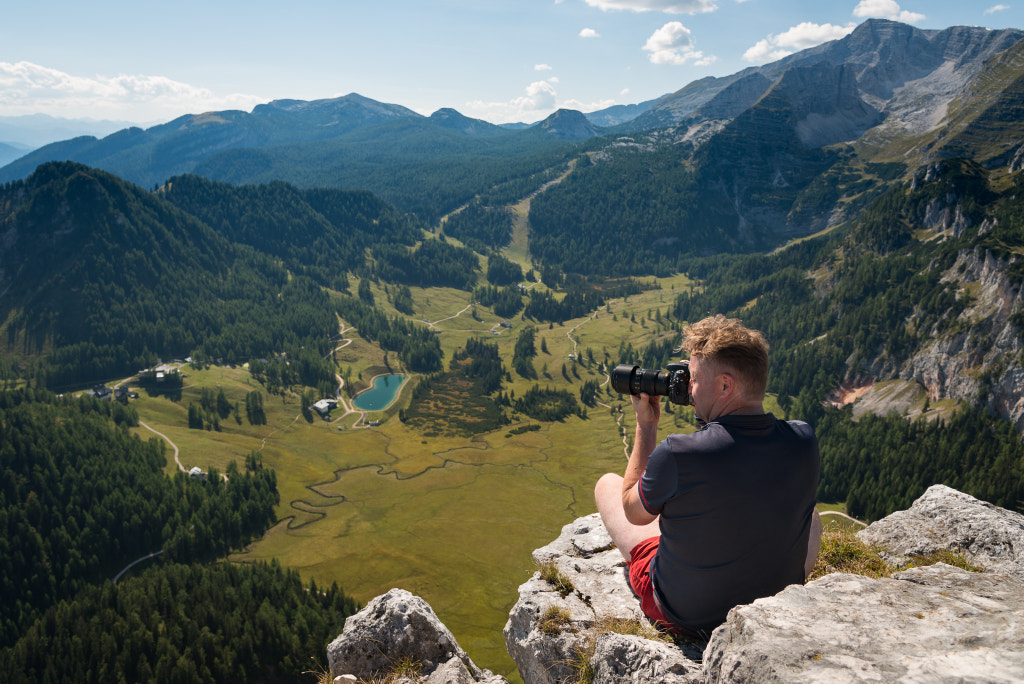If you’ve been in the world of commercial photography for a while, you might be familiar with the story of “everywhere girl,” a model who posed for a stock photoshoot in the 1990s. In the decades since, her photos have appeared throughout a vast range of marketing projects—on posters and brochures, in books, on blogs, and far beyond.
Even though she’s become something of a photo-world celebrity, and although there are millions of different stock photos available these days, that model, whose name is Jennifer Anderson, continues to find her pictures, well, everywhere.
The “everywhere girl” story is more than just a funny anecdote; it also contains a powerful lesson about building a successful commercial Licensing portfolio. Great stock photos don’t just sell once to buyers within one industry; they sell like hotcakes, to all sorts of buyers, over the course of many years. The everywhere girl photos were so versatile they appeared in school textbooks one day and billboards the next.
One of biggest challenges in commercial stock photography lies in creating sets of images that have that kind of widespread appeal—but it’s also something to keep in the back of your mind as you grow your Licensing portfolio. Here are our tips for creating a timeless collection of images that are relevant to a number of different uses.
Contents
Tip #1: Branch out
You might feel pressure to define your style or conform to a fixed aesthetic, but in creative Licensing, you want to appeal to a wide variety of potential clients. That means doing what you do best but also experimenting with different styles and genres to see what works.
Today’s commercial trends range from getting back to nature and protecting our oceans, which can be represented in landscapes and adventure photos, to working remotely and embracing the gig economy, which can be illustrated in business/lifestyle pictures. Even within a specific niche, like the CBD wellness trend or the rise of minimalist skincare routines, you can span several genres, from product/beauty shots to conceptual flatlays to docu-style environmental portraits.
Creative stock photographers adapt and evolve with the times, and often, that means trying new genres and tracking what sells. You could find, for instance, that although you started out as a straightforward landscape photographer, your hiking photoshoots with models end up selling better.
We recommend checking out trending categories on 500px and Getty Images, like food, travel, street, still life, fashion, etc., even if it’s not your area of expertise. Don’t be afraid to change it up and venture into new territory.
Tip #2: Be inclusive
Commercial photography has a significant role to play in challenging stereotypes, eradicating bias, and promoting acceptance. According to research, 70% of Millennials are more likely to choose one brand over another if the first demonstrates diversity and inclusion in their ads.
Today’s customers and brands alike are craving images that break the mold and celebrate diversity in all forms, from size inclusivity to gender inclusivity and everything in between. Commercial photographers can keep the momentum going by amplifying voices from within their communities. Collaborate with friends of all ages, ethnicities, identities, etc., or source local talent on social media for your next photoshoot. Document the diverse cultural landscape of your hometown.
Too often, image-buyers search for photos around a specific theme—family dinners, coworking spaces, eco-travel, etc.—but if they search those terms and find only photos with one demographic or group of people represented, they’re likely to skip right over them. Photos that accurately portray real customers, on the other hand, sell over and over again.
When working with models to create inclusive images, remember to keep the lines of communication open. Ask for input: what kinds of photos would they like to see in ads, and what subjects do they feel are still underrepresented? Capture a variety of group shots that celebrate community and belonging, and then take individual photos that highlight each model’s personality. Go into every shoot with a positive, uplifting, and collaborative attitude, and keep your ears open for ideas.
Tip #3: Expand your shot list
While we’re on the subject of models, remember to get every possible combination on set; even if you go into it planning to shoot a family dinner, you could also break it up and do a couple’s session, solo portraits with the kids, cooking shots, etc. You could also capture some handwashing details while you’re at it.
Bring a change of outfits, and scout a location that features a number of different backgrounds; a city park, for instance, could have lush trails, playgrounds, and vibrant gardens all in one place. A studio or home offers even more freedom to bring things in and move them around. You only get one opportunity to have everyone in one place, so take advantage and capture as many different scenarios and perspectives as possible.
It can help to keep a running list of commercial stock photography shoot ideas. Many of these ideas could potentially be combined and executed within a single shoot, saving you time and money and yielding more high-quality photos for your Licensing portfolio. Just remember to send your models your shot list so they know what to expect, and invite them to add to it if they’d like.
Tip #4: Leave room for improvisation
In stock photography, variety is the name of the game, so it’s important to keep moving between poses and trying out new things with your camera and models. Even when you’ve completed your formal shot list, you can continue to look for and generate new ideas.
A simple change in context can expand the possibilities of a shoot; get close for some portraits, and then go wide for some environmental shots that highlight your surroundings. Mix up your vantage point so it’s not all similar medium or wide, straight-on shots. Capture different formats and orientations (portrait, landscape, etc.) so that different clients can use different crops.
Use a variety of lenses; open that aperture for a shallow depth of field to draw attention to your subject, or shift your focus to appeal to different types of clients. “Stay ready to move around your models to capture different perspectives,” the 500px Content Team suggests.
When working with models, whether they’re professionals or not, it’s crucial to capture genuine emotions (that means no overly happy models laughing while eating salad). Improvising on set and having your models participate in activities they enjoy can help create those natural, emotional expressions, so ask your models to forget you’re there and have fun with it.
Tip #5: Make it universal
“While content featuring models does sell more often, sometimes buyers are looking for content that doesn’t feature anyone,” the Content Team explains. For that reason, it can help to mix in some general landscapes or still lives while you’re shooting with models. Have your models in the frame, and then grab some images without them.
A family photoshoot, for instance, could include portraits of the family pet; a lifestyle session could include window-lit food shots, or a hiking-themed shoot could include sweeping views of the wilderness. An outdoor fashion shoot could become an urban/cityscape session. The more categories and genres you can cover, the more versatile the photos will be.
Tip #6: Tailor your keywords
Versatile photos need versatile keywords. After applying basic words and phrases in bulk, go ahead and tailor additional keywords to individual images. Even photos of the same people could have a range of different emotions (e.g., happy, sad, daydreaming, disappointed, etc.) and themes (e.g., togetherness, individuality, adventure), all of which can be tagged on a case-by-case basis and added to your titles and descriptions. A photo with people will include keywords relating to their age, ethnicity, gender identity, relationships, etc., while photos without people will be tagged “no people” or “no one.”
Without going in and modifying your keywords individually, you could be limiting your sales potential; photos from the same shoot, for instance, could appeal to an outdoor lifestyle brand on one hand and a conservation group on the other, provided they have relevant metadata. “Use your descriptions, keywords, and titles to highlight different contexts within your images,” the Content Team advises.
Tip #7: Follow the news
When the COVID-19 pandemic hit, commercial photographers were presented with the opportunity to fill a content gap featuring PPE, new habits, and social distancing. Those who anticipated the need for these kinds of images were able to create in-demand, marketable photos.
This example might be an extreme one, but it does tell us something about the importance of keeping up with the news and staying ahead of the curve. In a broader sense, growing awareness of climate change has led to an increased interest in photos that feature sustainable ingredients, products, and lifestyles, and the continued focus on health and safety in a post-pandemic world has made wellness-themed photography even more relevant.
Keeping up with newsworthy events is the first step towards identifying new and emerging trends and creating fresh content on subjects that are popular but haven’t yet been extensively covered or illustrated. To start, stay up-to-date by following trend reports released by Getty Images and those published right here on the 500px blog; we update our articles regularly with new ideas.
Not on 500px yet? Click here to learn about Licensing with 500px.







